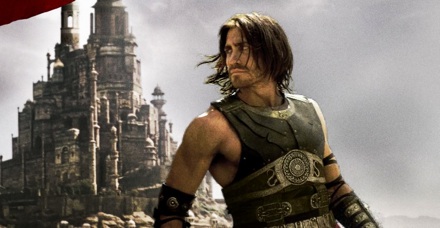
With great sense of excitement and curiosity for Iranians, Disney’s “Prince of Persia: Sands of Time,” starring Jake Gyllenhaal and Gemma Arterton, will open in movie theaters next month. Ari Siletz had an opportunity to interview producer Jerry Bruckheimer, who’s most recent hits include “Pirates of the Caribbean” and the “CSI” television series. Special thanks to Goli Fassihian. — jj
What observations, events or persons inspired you to the idea that PRINCE OF PERSIA: THE SANDS OF TIME would make a good movie?
The world that Jordan Mechner created in his videogame is a really wonderful combination of history, myth and fantasy. We thought it would be great to bring that world even more alive for moviegoers.
From a storyteller’s point of view what images and feelings does the concept of “Persia” evoke in you?
Persia is one of the greatest civilizations the world has ever known, so it give me a sense of its vast history, the magnificence of its architecture and design, literary heritage and imagination.
What qualities of Jake Gyllenhaal say “Prince of Persia” to you?
Jake is a wonderful actor who’s proven himself in a real variety of roles and is also very handsome. I knew instinctively that he would create a really compelling character in Dastan who could be heroic and human at the same time.
What qualities does Gemma Arterton bring to the film?
Gemma is really a talented and classically-trained young actress who had recently graduated from the Royal Academy of Dramatic Arts in London. She’s also very beautiful. Again, like Jake, I knew that we had found someone who could create fully-dimensional character in Tamina.
As a producer, what efforts do you initiate to create the sense of cultural authenticity in the universe of the story?
“Prince of Persia” is a fantasy based upon history, so we hired an amazing team of designers who did an enormous amount of cultural research into Persia and its vast empire at that time. But at the same time, we gave them the freedom to invent a world especially designed for the film.
Friendship, patriotism, teamwork and the quest for freedom have been among the motivators driving action in your films. How would you characterize the motivations or personal strengths that compel the protagonists in “Prince of Persia”?
Very much the same as what you describe, to which I would add “family.” Dastan is a child of the streets who is adopted by the king, and his struggle is to prove his worth as a son of that king, and brother to the king’s natural sons, to truly become a prince of Persia.
The name Dastan may reference Persia’s greatest epic hero, Rostam. Were Persian literature resources used in researching the film?
Actually, Jordan Mechner found the name “Dastan” in the Shahnameh, the Persian book of kings, which inspired him greatly for both the video game and the film. He said that ie means “trickster,” which is perfect for the character, because as Jordan says, Dastan is an underdog who’s a bit mischievous and gets by with his cleverness. And the trickster is a literary archetype which goes through all literary history.
Farah and Tamina are distinct archetype names for the Iranian-American audience. What led to the name change from Princess Farah in the video game to Princess Tamina in the film?
Again, this came from Jordan Mechner. He combined the names of two characters in Mozart’s opera “The Magic Flute” Pamina and Tamino, into Tamina, which is a beautiful Persian name, and sounds truly regal.
Sometimes films with settings in foreign lands make a special effort to be sensitive to the sentiments of the native people. How do you weigh the critical need for artistic license against the restrictions of intercultural respectfulness?
We’ve tried to pay homage to the greatness and beauty of Persian culture and history while at the same time creating a story of fantasy and magic for all audiences to enjoy. Artistic license is always used to tell great stories, even by people telling their own cultural legends and myths.
There are pictures of you on the set of the film. Would you give us some recollection(s) of your on-the-set feedback during the production process?
“Prince of Persia” was a fabulous production experience, but also a very challenging one. We shot during the middle of the summer in Morocco and temperatures every day were at least 100 degrees, sometimes as high as 120 or 125. But it was exciting to see this story come alive visually, with our wonderful sets, costumes, set dressing and props, many of which were handmade by the very talented artisans of Morocco. After location filming, we shot on nearly every soundstage at Pinewood Studios outside of London on huge sets, including the “007 Stage,” the largest in Europe.
As a producer of action films, do you see necessary compromises between mass appeal and artistic/intellectual depth?
I don’t really see it that way. For me it all comes down to story and characters you want to follow and which take you away for a couple of hours from your “real” life.






